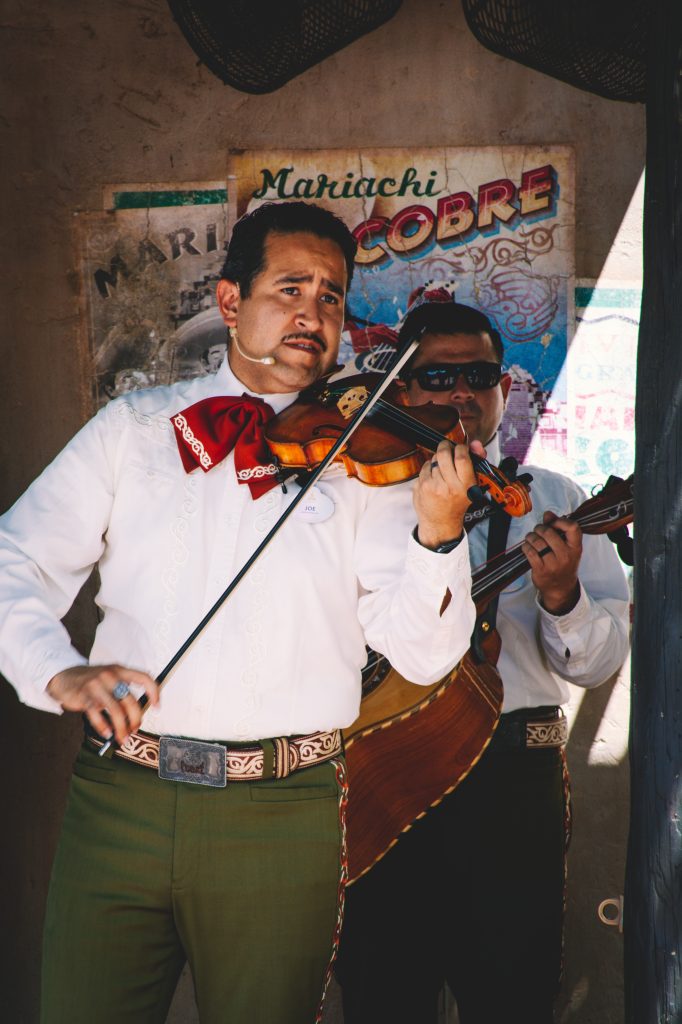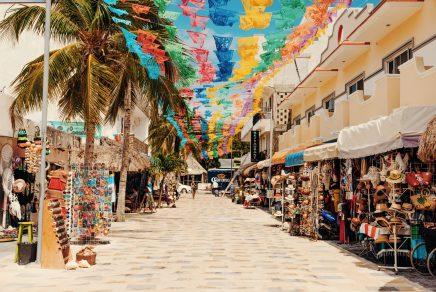Share the article
Mexican music boasts a rich and vibrant heritage that has evolved over centuries. It’s deeply intertwined with the country’s history, social fabric, and diverse landscapes. From the lively rhythms of mariachi to the soulful melodies of bolero, Mexican music reflects the unique character of each region. In fact, different musical styles flourish across Mexico. Each town and state offers its own distinct sound, yet these genres constantly influence one another, blending and evolving into new, dynamic forms. This ongoing fusion makes Mexican music a living expression of the nation’s culture and identity.
Listen to De Corazon ranchero by Voz de Mando and let yourself be swept away in nostalgia.
Norteña music was born in Texas at the time when the state was still Mexican. It‘s traditionally played by an accordion, a bajo sexto (a cousin of the bass), a guitar and an upright bass. Which, for the record, also serves as a percussion instrument. The norteño rhythm is often a ¾, three beats per bar. It can also be performed as a 4/4, four beats per bar. Sometimes, in the sierrana version of norteña music, a tuba will replace the upright bass and vocal harmonies stack up with a touch of country. If played in a slow tempo, nortena songs might make you feel nostalgic. But played in a faster tempo, those songs will make you want to dance. And maybe even wear a cowboy hat!
Nortena’s little sister is named ranchera and often features strings, horns and sometimes even a harp. Whether the songs talk about love or nostalgia or are played in a fast or slow tempo, they certainly travel straight to the listener’s heart. Ranchera music may vary according to the region or state of the country. For instance, in the state of Sinaloa, the banda sinaloense is performed by twelve to eighteen musicians instead of the traditional five or six musicians of the usual Ranchera.

Learn more about some aspects about life in Mexico with Corrido de Juanito by Calibre 50
The corrido’s origins go back to the Mexican Revolution. Its lyrics tell stories, real or fictive, about daily life. They almost act as a historical testimony. Guitars, accordion, ¾ waltz tempo, drums and tuba… Corrido survived the test of time and gave birth to narcocorrido. This is a genre that talks about life in the world of drug trafficking, with hip-hop beats and rap added to it.
Dream of a beautiful sky with Cielito lindo by Los Mariachis Vargas de Tecalitlan
One cannot talk about Mexican music without mentioning the infamous Mariachis! Its origins are rooted in waltz and polka of the 18th Century. The heart of mariachi music is located in Guadalajara. However, it’s played throughout the whole country in slightly different ways, with or without the usual costumes. Strong lead harmonies, sombreros, guitars, strings, trumpets, guitarron, are all part of the Mariachi culture, for the best!







